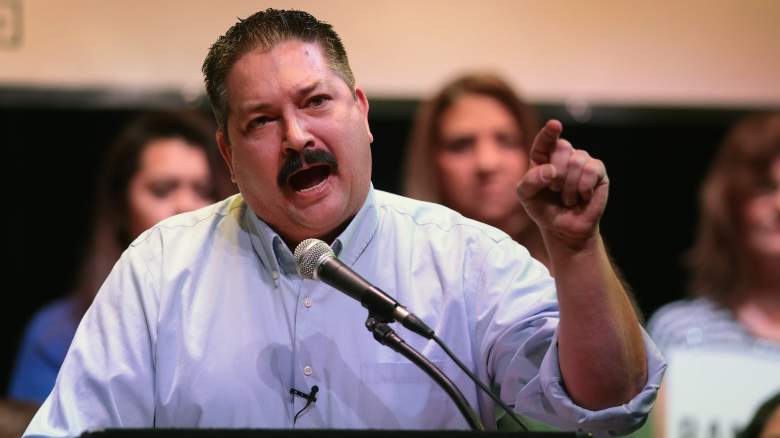
Getty Randy Bryce speaks at a rally on February 24 in Racine.
Since President Trump took office last year, Democrats have been on a torrid streak in special elections. They’ve flipped state legislative seats in Kentucky and Oklahoma; won a U.S. Senate race in Alabama, where Trump crushed Hillary Clinton by 28 percentage points; and flipped the U.S. House seat in Pennsylvania’s 18th district, where Trump won by nearly 20. That’s in addition to winning the regularly scheduled governor’s races in New Jersey and Virginia, and gaining more ground in the Virginia House of Delegates than they’d gained in any election since 1899.
On April 3, Democrats got another piece of overwhelmingly encouraging news in Wisconsin, where Judge Rebecca Dallet, a progressive backed by state Democrats, easily won a hotly contested state Supreme Court race against Michael Screnock, a conservative backed by Governor Scott Walker and other state Republicans. Walker, who’s seeking election to a third term this fall, launched into a late-night tweetstorm warning of the potential of a #BlueWave that could cost him his governorship.
Those election results, coupled with Democratic-friendly generic ballot polls and Trump’s anemic approval ratings, have fueled a surge in Democratic optimism. Progressive activists are hopeful not just that the Democrats can take back a majority in the House of Representatives this fall, but that they can build a wave strong enough to sweep away one of their chief antagonists: House Speaker Paul Ryan, who’s served 10 terms in Wisconsin’s 1st district.
That brings us to Randy Bryce, one of the Democrats challenging Ryan. The “Iron Stache” has campaigned with Bernie Sanders, appeared at celebrity-splashed fundraisers on both coasts, and raised more than $4.75 million since launching his campaign last June. He’s almost certainly the most well-known and most talked-about House challenger in the country, despite never having held elected office.
Bryce, a 53-year-old union iron worker and long-time activist, still has to beat Janesville school board member Cathy Myers in the August 14 Democratic primary, but he’s widely expected to do so. That would likely set up a showdown with Ryan, who Bryce has been taunting on social media and on the campaign trail since launching his campaign.
The 1st district, which stretches from the Milwaukee suburbs south toward the Illinois border, appears at first glance to be the type of place where a strong Democratic candidate might have a chance. Though it’s moved rightward over the past two presidential elections, Trump carried it by a modest 10 percentage points in 2016, according to Daily Kos Elections. Barack Obama won it by 3 in 2008. But election analysts are unanimous in their view that the district is more GOP-friendly in congressional races than its presidential voting history might suggest.

Randy Bryce greets guests at a rally on February 24 in Racine.
Analysts differ slightly on whether they view a Bryce victory over Ryan as unlikely or next to impossible. They agree emphatically that if he’s on the ballot, Ryan will be heavily favored.
“Ryan does represent somewhat of a swing seat,” said Kyle Kondik, managing editor of the University of Virginia’s Sabato’s Crystal Ball. “It’s sort of on the fringe of potentially competitive seats. Could he run and still lose? Yeah, I think it’s possible. I think it’s pretty highly unlikely.”
Here, though, is a source of uncertainty: Less than two months before the June 1 filing deadline, Ryan still hasn’t committed to seeking an 11th term. Though he’s keeping an active presence in the district and has more than $9 million in cash on hand, Ryan has told reporters he won’t make a decision on whether to run until he talks it over with his wife, Janna, something he does in the spring of each election year. At the time Ryan addressed reporters in February, that conversation hadn’t happened, and Jeremy Adler, a political spokesman for Ryan, said this week the campaign had no updates to report beyond Ryan’s previous comments.
The lack of clarity about Ryan’s plans is one of many reasons the race is complicated to analyze and fascinating to follow. That the race is taking place in Wisconsin — a political battleground and a hotbed of activism on both ends of the ideological spectrum — has brought it even more attention. Dallet’s victory Tuesday has further energized state Democrats, who were already buoyed by a January victory in a state Senate special election in a GOP-friendly district along the Minnesota border, and who have been dreaming for years of ousting Walker, an antagonist of public employee unions who survived a recall attempt less than 18 months after he took office.
But that Democratic enthusiasm is up against forces that will be hard to overcome. Democrats have never come remotely close to beating Ryan in any of the previous 10 times he’s been on the ballot, and the conventional wisdom is that he’ll be very hard to beat if he seeks an 11th term in November.
A closer look at the district reveals why Ryan remains an overwhelming favorite if he’s on the ballot — and why, at the same time, Democrats are feeling increasingly bullish about their chances.
Ryan Is Unpopular Nationally, but He’s Been a Dominant Political Force at Home
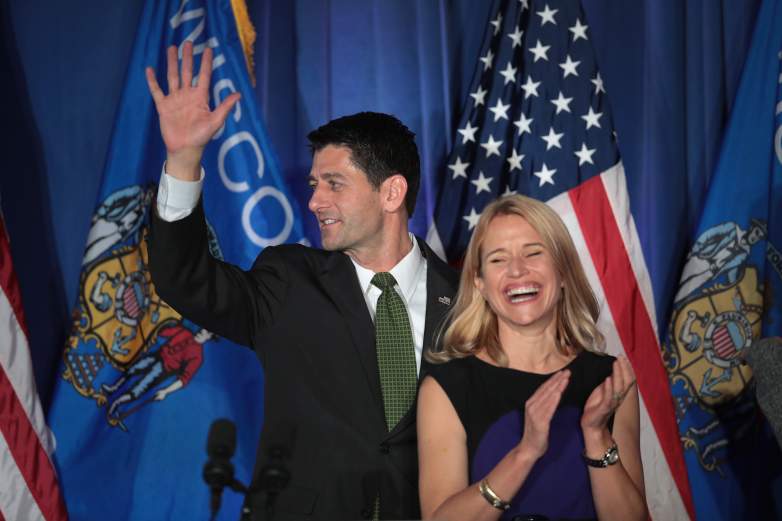
GettyPaul Ryan and his wife, Janna, at an election night rally in Janesville on November 8, 2016. Ryan won re-election by 35 percentage points.
Ryan, along with other congressional leaders in both parties, is deeply unpopular nationally. And there are some signs Democrats can cite to argue his popularity at home may be waning as well.
A November 2017 survey from left-leaning Public Policy Polling, commissioned by the Democratic PAC Patriot Majority, found Ryan’s approval rating underwater in the district, with 42 percent of respondents approving of his performance and 50 percent disapproving. (The same poll found Ryan beating Bryce in a hypothetical general election matchup by 7 percentage points.)
A separate PPP survey conducted last October found Ryan with just a 35 percent approval rating state-wide, with 51 percent disapproving. (That poll didn’t provide district-level data, but it’s a safe bet that Ryan’s numbers in his district are better than they are in the state as a whole.) Bryce’s campaign says a poll it commissioned last November and publicized in early December showed Bryce trailing Ryan by a modest 6 percentage points.
But a recent poll by Marquette University Law School — the gold standard in Wisconsin polling — found numbers that Ryan backers find reassuring: State-wide, the poll found that a respectable 46 percent of registered voters had a favorable view of him, while 39 percent held an unfavorable view. More importantly, in the part of the Milwaukee media market outside the city of Milwaukee — a region that includes a sizable chunk of Ryan’s district — the poll found that 55 percent of voters held a favorable view of the Speaker, while only 36 percent held an unfavorable view. (A smaller part of Ryan’s district is in the Madison media market, where Ryan’s numbers are well under-water, with a 33-59 favorable/unfavorable split.)
And throughout his career, Ryan has been an electoral powerhouse in the 1st district. The Speaker has steamrolled every Democratic opponent he’s faced over the past 20 years, winning by no fewer than 14 percentage points and far out-pacing GOP candidates at the top of the ticket. In 2016, Ryan won his re-election bid over Democrat Ryan Solen by 35 percentage points, out-performing Trump by 25 points even as Trump was en route to becoming the first Republican since Ronald Reagan to carry the state. That was after he annihilated Paul Nehlen, a white nationalist whose candidacy had been championed by Breitbart, by 68 percentage points in the GOP primary.
Nehlen is running in the GOP primary again this year, but he figures to have even less support this time around than he did in 2016. Breitbart, then run by Steve Bannon, denounced Nehlen last December after he began to make more overtly racist and anti-Semitic comments.
Brandon Finnigan, an elections junkie who founded the highly regarded Decision Desk HQ and has studied Wisconsin politics for years, is among the analysts who considers Ryan close to a shoo-in if he’s on the ballot. And the race against Nehlen, who recently described himself as “pro white,” is one thing Finnigan says is working in the Speaker’s favor.
“(He’s) probably one of the most horrific candidates to get this far,” Finnigan said. “His positions are so incredibly extreme on some things that people who supported him in 2016 have all abandoned him. … You couldn’t ask for such a goofy opponent in your primary.”
The Analysts Most Bullish on Democrats’ Chances Still Rate the Race as ‘Likely Republican’
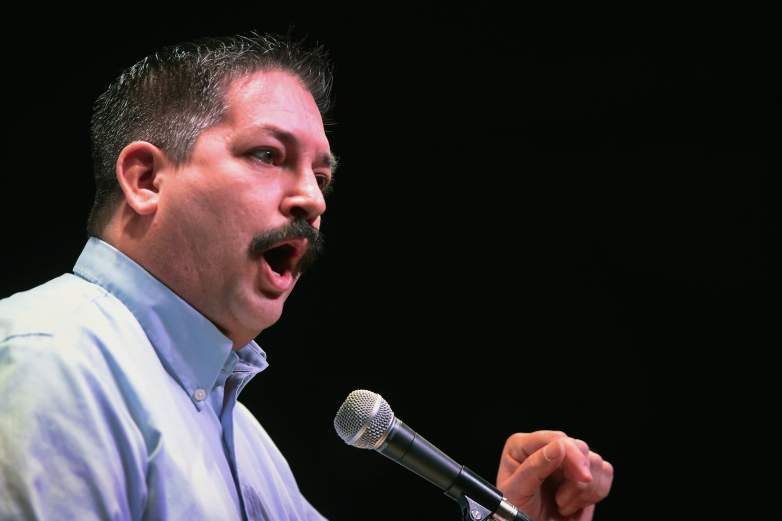
GettyRandy Bryce speaks at a rally on February 24 in Racine.
Even as Democrats have emerged as favorites to re-take a majority in the House, two of the most prominent organizations that issue qualitative ratings on House races — the Cook Political Report and Inside Elections — rate the race as “safe” or “solid” Republican. In a recent analysis, Fivethirtyeight’s Nate Silver estimated that the party listed as the favorite has won seats with that label about 95 percent of the time.
Throughout 2017 and early 2018, Sabato’s Crystal Ball joined its peers in listing Ryan’s seat as “safe Republican.” Yet on March 8 — five days before Democrat Conor Lamb’s special election victory Pennsylvania’s 18th district — the publication made an interesting shift, moving the seat from “safe Republican” to “likely Republican.”
CNN followed suit 10 days later, noting that “southeastern Wisconsin is actually friendlier territory to Democrats than southwestern Pennsylvania.” But even as they touted Bryce’s ability to make the race competitive, CNN’s Terence Burlig and Eric Bradner led their summary of the race as follows: “This is House Speaker Paul Ryan’s district, and it’s likely to stay that way in November.”
If Ryan Were to Retire, Democrats’ Chances of Winning the Seat Would Spike Dramatically
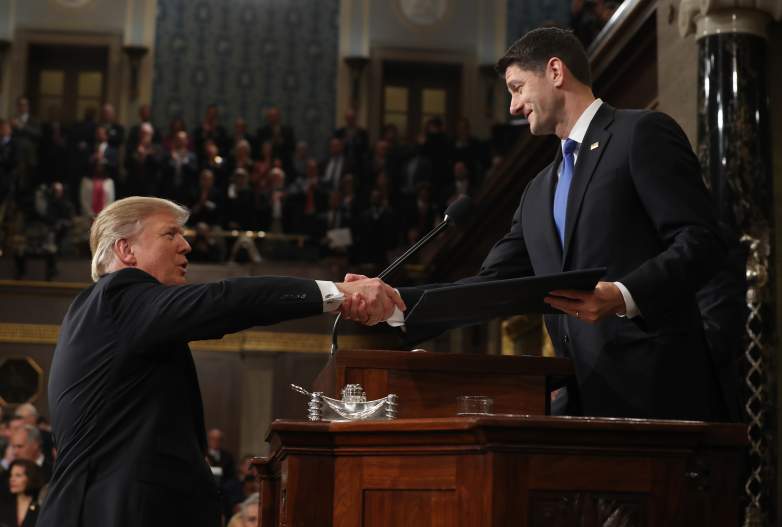
GettyPaul Ryan shakes hands with Donald Trump prior to Trump’s address to Congress on February 28, 2017.
When writing about the ratings shift, Kondik touched on the factor that may be Bryce’s best shot at victory: The possibility that Ryan will opt to retire rather than seek re-election.
That scenario gained a considerable amount of attention last December, when Politico reported that those close to Ryan had become convinced that the Speaker was ready to call it quits in order to spend more time with his young family in Janesville. Though Ryan’s political future had always appeared uncertain — he was openly hesitant about agreeing to become Speaker in the first place in 2015 — the Politico piece captured the attention of political observers from Washington to Racine. If Ryan were to retire, analysts agree that the Democrats’ chances of flipping the seat would skyrocket, making the race something akin to a tossup.
Anyone hoping for more news on the Ryan retirement front would have been at least partially disappointed in the weeks and months that followed. There was little public murmuring throughout the rest of the winter that Ryan was on the verge of retirement, and the conventional wisdom inside and outside the 1st District has been that Ryan will likely be on the ballot.
Yet Democrats rooting for Ryan to step aside may not be entirely without hope. The Speaker has been non-committal about his plans, and the public chatter about his future has been mixed. On March 26, Republican congressman Mark Amodei said on the Nevada Newsmakers show that he’d heard a “rumor” on Capitol Hill that Ryan would resign as Speaker in the next 30 to 60 days and be succeeded by Majority Whip Steve Scalise.
Three days later, the Associated Press, citing an anonymous source with knowledge of Ryan’s plans, reported that the Speaker was planning to run for re-election, but might not remain in Congress next year if the GOP loses its majority. The conflicting signals have prompted some movement in betting markets, with traders at the online market PredictIt giving Ryan just a 66 percent chance of being the GOP nominee in the district and a 52 percent chance to be re-elected in November.
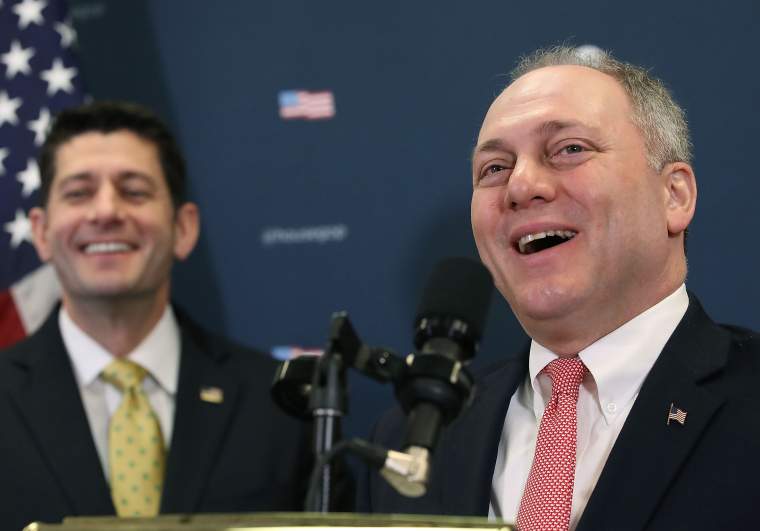
GettyA GOP congressman from Nevada says there’s a “rumor” going around Capitol Hill that Majority Whip Steve Scalise (right) could soon replace Paul Ryan as Speaker.
Adler, Ryan’s political spokesman, was dismissive of the AP report. “The Speaker speaks for himself on this topic, and there is no update to his last public comments,” he said in a statement.
In a separate statement, Adler said Ryan was confident in his re-election hopes.
“Paul Ryan’s top priority has always been working to make things better for his constituents and passing legislation, like tax reform, that will save working Wisconsin families more than $2,500 a year,” he said. “We have no doubt that he’ll be re-elected this fall by a comfortable margin, just like he has been the nine previous times that he’s been on the ballot in the First District.”
Bryce and his aides have closely followed the speculation about Ryan’s future, though they say they’re confident they can win the race regardless of their opponent.
“We had talked about it before we first started,” Bryce said in a January interview in Racine. “Like ‘if we really get this thing rolling, he might just bail. …. He looks miserable, and I’m happy to have something to do with that.”
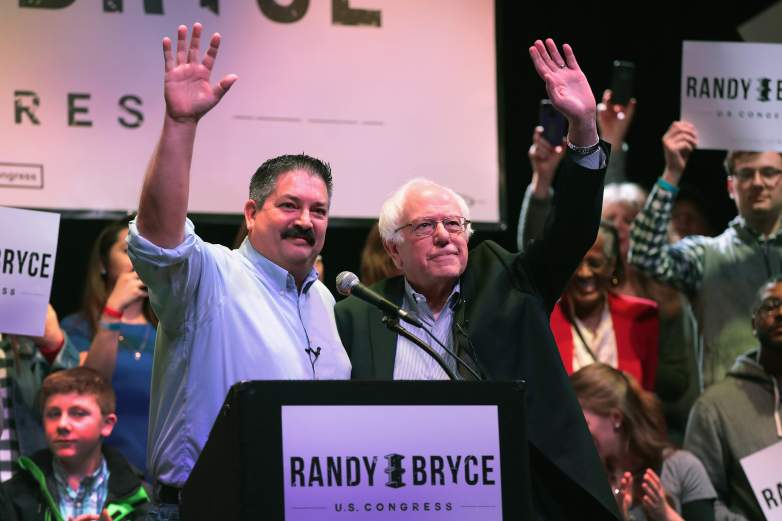
GettyRandy Bryce campaigns with Senator Bernie Sanders February 24 in Racine.
Few people understand the challenge Bryce is facing better than Rob Zerban, the Democrat who ran unsuccessfully against Ryan in 2012 and 2014. Zerban is the only Democrat since 1998 to come within 15 percentage points of beating Ryan, though that result, which came in 2012, comes with a caveat: Ryan didn’t campaign for re-election at all since he was busy serving as the GOP nominee for vice president. Zerban said he entered the race each time optimistic he could be competitive, and hoping for support from state and national Democrats, and prominent progressives throughout the country.
In his 2012 bid against Ryan, Zerban got some fundraising help from Joan Jett, who donated a signed guitar and other memorabilia that Zerban then auctioned off to benefit his campaign. But Jett’s contributions aside, the support Zerban envisioned never materialized, leaving the candidate spending most of his energy soliciting donations.
“It always seemed like an uphill battle,” Zerban said. “I spent hours on the phone trying to raise the money and resources, after having written some big checks of my own to get the campaign started. It was just a never-ending process.”
With money pouring in from donors throughout the country, Bryce doesn’t have to deal with the process that plagued Zerban and other previous Ryan foes. Those resources are among the reasons Bryce’s campaign is projecting confidence.
“Randy is well-poised to be the next Congressman of the First District of Wisconsin, regardless of whether or not Ryan is on the ballot,” Bryce spokeswoman Lauren Hitt said in a statement. “And we can understand why Ryan would step down: he’s facing a fight like he never has before.”
Yet because of the rightward tilt of the district and Ryan’s personal electoral prowess, out-performing previous Ryan challengers won’t be enough to win the race, even if a Democratic wave materializes nationally.
The hurdles Bryce is facing go beyond Ryan’s personal appeal in the district. There is no precedent for a Democratic candidate anywhere on the ballot carrying the district without presidential-election-level turnout in the district’s Democratic strongholds. Dallet lost the district by about 5 percentage points despite winning state-wide in a 12-point landslide.
“The challenge for Bryce is he needs presidential Democratic turnout in strongholds that are themselves heavily outweighed by the (Milwaukee) suburbs,” Finnigan said. “The theoretical cycle where he could win requires a family-destroying scandal around Ryan or a cataclysmic Democratic wave — one so massive his loss would be a footnote rather than a highlight.”
There’s One Recent Example of a Democrat Carrying the District: Barack Obama

GettyBarack Obama, then a candidate for the Democratic presidential nomination, greets an employee during a tour of the General Motors assembly plant in Janesville on February 13, 2008. The plant closed roughly 14 months later.
Assuming Ryan isn’t plagued by scandal, that leaves Bryce with two somewhat related avenues:
Option 1: A Democratic wave of near-historic proportions, coupled with just enough erosion in Ryan’s support to make him vulnerable in that type of environment.
Option 2: A scenario in which Ryan opts to call it quits rather than seek an 11th term.
Charles Franklin, the long-time director of the Marquette poll and a long-time observer of Wisconsin politics, is skeptical but not dismissive of Bryce’s chances.
“It’s not the most Republican district in the state, but Ryan has been office a long time, and has almost always had really minimal challengers,” Franklin said. “That raises some questions about: Could a strong, well-funded candidate give him some problems? …. Whether it’s legislative or congressional races, (there are) a fair number of races in which the losing candidate gets 30 or 35 percent of the vote, and those are almost always very poorly funded races against a well-entrenched, well-funded incumbent, and you kind of go, ‘what did you expect? No disrespect to those candidates. But you do have to have some resources.”
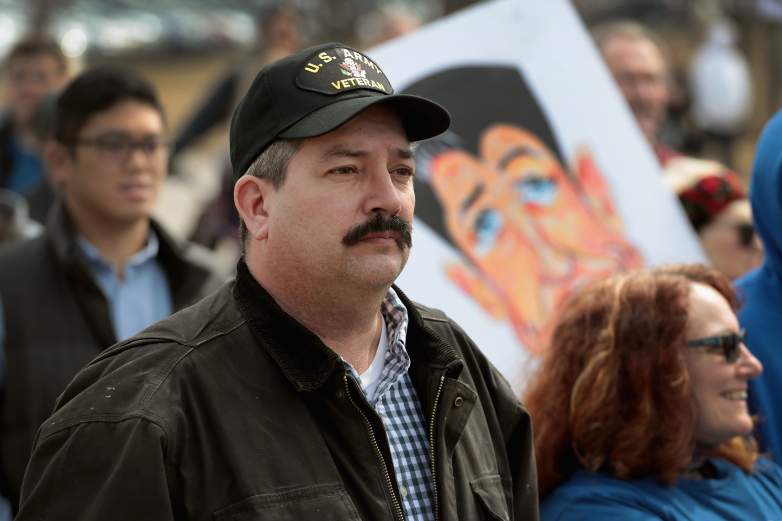
Randy Bryce attends a March 28 rally in Janesville to show support for students who finished the last leg of a 50-mile march through Wisconsin to call attention to gun violence.
I asked Franklin what a Democratic roadmap to victory in the district would look like, in the event that Bryce or another Democrat could pull off an upset.
Here’s what he laid out:
A “tsunami-level” Democratic turnout surge in Rock County, which has historically been the third biggest source of Democratic votes in the state. (The county includes Ryan’s hometown of Janesville, which happens to be one of the more Democratic-leaning municipalities in the district.)
A Democratic turnout surge in the city of Racine, the most Democratic-leaning municipality in the district.
Winning over significant chunks of potentially persuadable voters in Kenosha, where neither party has gained a stranglehold on the electorate.
Depressed Republican turnout in the slice of the district that’s part of Waukesha County, one of the most reliable sources of GOP votes in the state, and one of the most GOP-leaning suburban counties in the country.
The scenario Franklin laid out resembles what played out on the presidential ballot in 2008, when Barack Obama carried Wisconsin’s 1st by 3 percentage points over John McCain. Obama is the only Democratic presidential nominee to carry the district in its current form.
The 2008 campaign presented an ideal scenario for Democrats: Historic turnout coupled with a national environment that overwhelmingly favored Democrats. Obama routed McCain by more than 7 percentage points nationally, and Democrats won the cumulative House popular vote by more than 9 percentage points, flipping 21 GOP-held seats and expanding the majority they had won in 2006. The 2008 election is evidence both of what’s possible for a Democrat in the district, and how hard Ryan would be to beat if he were on the ballot in November.
Even as Obama carried the district by 3 points, Ryan crushed Democrat Marge Krupp by almost 30.
— Heavy contributor Ariel Goronja contributed to this report.
